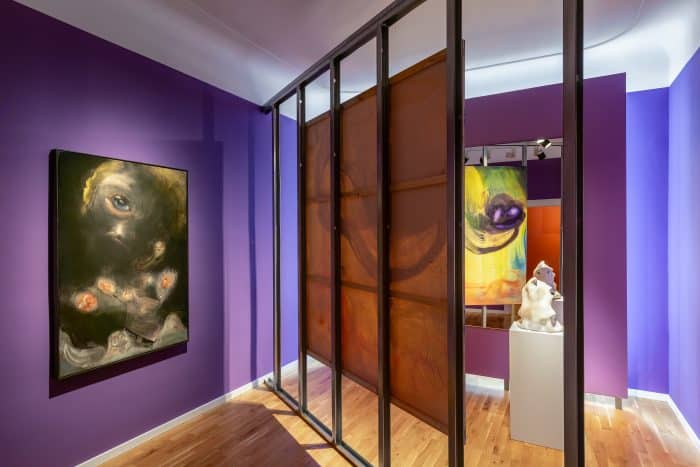Inter/Penetration: The Uncanniness of Seeing
The two-part exhibition, Durchdringen: Das U/unheimliche s/Sehen, by artist and curator Michael Müller is on display from 11 September 2024 to 8 December 2024 at the Stiftung Kunstforum Berliner Volksbank as part of Berlin Art Week 2024. With a semantically and typographically layered German title, which roughly translates to “Inter/Penetration: The Uncanniness of Seeing”, it explores complementary pairs, as found, for example, in the various definitions of penetration (durchdringen), which can mean not only comprehend but also probe or scrutinise, among other things. Against this background, the exhibition also considers the relationship between the familiar (heimlich) and the mysterious (unheimlich), which psychoanalyst Sigmund Freud discussed in his 1919 essay “The Uncanny” (“Das Unheimliche”). Seemingly antithetical things, events and processes can, in fact, be mutually interrelated and inextricably connected.
In the first part of the exhibition, in which Michael Müller presents works from the Kunstsammlung der Berliner Volksbank, its exhibition design and staging hinder habitual ways of seeing, compelling visitors to change their perspective and position in the darkened, compact spaces as they are denied their customary practice of moving closer to artworks. The individual works’ self-evident and familiar aspects recur in altered form, demanding they be examined with new eyes. What the viewer sees is unfamiliar and remains vague, thus revealing each artwork’s underlying layers and empty spaces, its lacunae, which previously had been concealed by supposed familiarity and assumed understanding.
In the second part of the exhibition, Michael Müller increasingly adopts the role of the artist, responding to the collection via his artworks, scrutinising it by aesthetic means. Müller makes it impossible to pigeonhole artists and works according to conventional aesthetic, stylistic, historical and substantive categories. Instead, he creates a series of independent narratives in which two works are juxtaposed and brought into dialogue.
This part of the exhibition focuses primarily on Freud’s description of the uncanny (unheimlich) furnished in his homonymous study. According to him, the uncanny stems not from the unknown and the strange but rather from the familiar, which has been repressed and rendered invisible. Freud illustrates this through its opposite, the familiar, or heimlich, a word that in German has two ambivalent levels of meaning (cosy and hidden or concealed). It is uncanny when something emerges that should have actually remained hidden and secret. Applied to art, a work is uncanny when levels surface that are generally concealed and obscured by its usual presentation and categorisation according to art-historical criteria, but suddenly come to the fore through its juxtaposition with other artworks or unexpected narrative possibilities.

Müller’s concept detaches the artworks from the Kunstsammlung der Berliner Volksbank from their previous exhibition context and recontextualises them. Sculptures, paintings and works on paper appear in a new light, imbued with literary anecdotes and surrounded by unfamiliar colours and forms. The works become part of a new timeless narrative that emerges amidst Müller’s own works and loans.
For the visitors, penetrating the exhibition means engaging with new perspectives, questioning realities and discovering hidden meanings. Stiftung Kunstforum Berliner Volksbank thus becomes a place of artistic intensification, where the known and the unknown meet in a fascinating way.
The exhibition includes works by:
Gerhard Altenbourg, Armando, Roger Ballen, Hans Bellmer, Asger Carlsen, Rolf Faber, Galli, René Graetz, Hans-Hendrik Grimmling, Bertold Haag, Martin Heinig, Hirschvogel, Ingeborg Hunzinger, Leiko Ikemura, Aneta Kajzer, Max Kaminski, Henri Michaux, Michael Müller, Michael Oppitz, Cornelia Schleime, Stefan Schröter, Werner Tübke, Max Uhlig.
Partner of:
